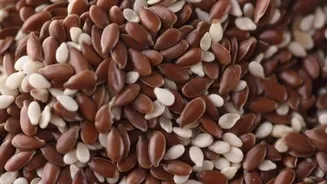Bread Cube Essentials
The journey to creating fantastic stuffing starts with the humble bread cube. But, what kind of bread works best, and what steps should you take to prepare
it for your stuffing creation? Selecting the ideal bread is the initial move. Stale bread is your ally here; it absorbs flavors wonderfully. Avoid using fresh bread, as its moisture content can make your stuffing mushy. Sourdough, French bread, or Italian bread are excellent choices, offering a delightful texture. The next phase is the preparation. Cut your bread into uniform cubes—approximately one inch in size—to ensure even drying and browning. If you're utilizing store-bought bread, removing the crust is optional, depending on your taste preferences, as it can add additional texture. Now comes the drying process. You have two primary methods: the oven or the air-drying technique. This crucial step eliminates moisture, allowing the bread cubes to absorb the flavorful broth and other liquids of your stuffing.
Oven Drying Bread
Employing an oven to dry bread cubes offers a practical and controlled approach. Initially, preheat your oven to 200°F (93°C). Then, spread the bread cubes uniformly across a baking sheet in a single layer. This arrangement promotes even drying. Place the baking sheet into the preheated oven. Bake for approximately 1-2 hours, keeping a close eye on the cubes throughout this process. The goal is to dry the bread cubes thoroughly but not over-bake them, which could lead to burning. Regularly check the texture; the bread cubes are ready when they are completely dry to the touch and somewhat crispy. Remember to stir the cubes at intervals to ensure they dry evenly. Allow them to cool completely before using them in your stuffing recipe.
Air-Drying Bread Cubes
Air-drying bread cubes provides a hands-off, more natural way to prepare them. This method is especially appealing because it utilizes no energy. After cubing your bread, spread the pieces in a single layer on a clean, dry surface, ideally a baking sheet or a large, flat tray. Ensure there is enough space between the cubes to allow air to circulate freely. Place the tray or sheet in a dry location with good air circulation. A cool, airy area, away from direct sunlight, is ideal. Allow the bread cubes to air dry for about 24 to 48 hours, depending on the humidity and air circulation of your environment. Regularly check the bread cubes. They should be firm and dry when they are ready. Air drying is an excellent choice for individuals who want a simpler approach to prepare bread cubes. This method requires a bit more time than the oven method, so you should plan ahead.
Tips and Variations
Enhance your bread cube preparation with these useful tips and creative variations. Adding a subtle hint of flavor can elevate your stuffing. Consider incorporating herbs such as rosemary, thyme, or sage directly into the bread cubes. You can do this by sprinkling dried herbs over the bread cubes while they are in the oven, allowing them to infuse with flavor as they dry. Alternatively, brush the cubes with herb-infused olive oil before baking for a more pronounced taste. Another idea is to toast the bread cubes with butter for additional richness. Use unsalted butter for better control over the flavor. Melt the butter in a pan, toss the bread cubes in it, and toast them until they are lightly golden. If you have any bread crusts you don't use, you can repurpose them. Crusts can be baked along with the bread cubes, adding extra texture. If you choose to add them, simply chop them into small pieces and incorporate them. By incorporating these methods, you can tailor your bread cubes to match your specific stuffing recipe and preferences. Experiment and enjoy the process of customizing your bread cubes.














